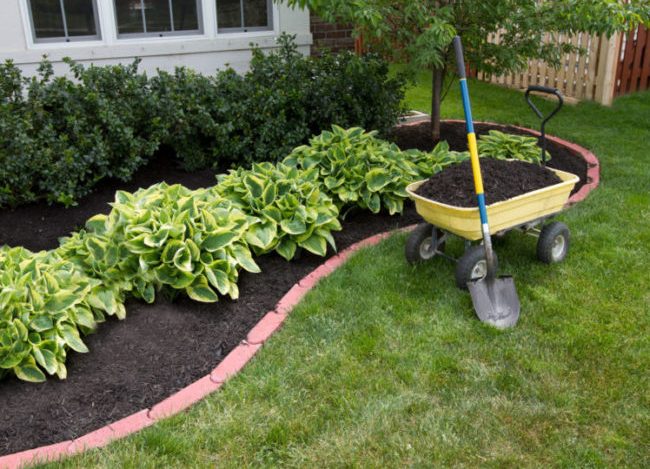Getting ready for summer in your garden: 4 tips for preparing for long days and heat
Let’s face it, after spring cleaning and freshening up the mulch in the gardens, most homeowners don’t do anything else to support or prepare their landscape for the long, hot summer days. The reason is simple – after winter despair, spring is perceived as such a gift that we accept it with gratitude and simply laze around and enjoy it. Leaves appear, grass grows, trees and shrubs bloom. We tend to think that we don’t need to do anything. But along with that, over time, weeds can simply “take over” your garden, and you stand stunned, saying, “What the hell happened?”
The answer to this question is also simple. Seasons change. And when they do, the plants’ behavior also changes. Fortunately, there are some simple decisions you can make to get ahead of Mother Nature and work with her to keep your garden thriving all summer long. It is this type of partnership that will allow you to get the most out of your landscape at any time of the year.
Nature has no days off.
In the summer, when the days get longer and lazier, it’s nice to just relax, grab a refreshing drink and sit in the shade. Summer is the hardest time of the year for the landscape. Why? Because the summer heat and dryness can create significant stress on some plants, while at the same time promoting the active growth of other—mostly the ones we don’t want—weeds! These extreme conditions can occur suddenly.
During the active growing season, more water moves up than down. Look at all the large plants such as trees and shrubs in your landscape. They are like big straws stuck in the ground. All these roots, branches and leaves draw water from the soil, usually when a light rain falls to replenish it.
The more leaves and the more blooming flowers, the more water evaporates through them from the soil systems. Increased temperature causes plants to quickly evaporate moisture, which is called transpiration. Plants take water from the soil system and lift it into the air system. This is why we quickly go from wet to dry.
So how do we deal with this natural change, other than just pouring more water onto the ground through hoses and irrigation systems? Of course, watering may be necessary in the short term, but if you find that watering doesn’t seem to be helping, you’ll need to make some soil amendments next fall and next spring. Mid-summer is NOT the time to start messing with your soil profile.

1) Мульча.
Є дві причини, через які ми додаємо мульчу в сад: вона допомагає утримувати вологу і позбавляти бур’янів. Мульчуйте ранньою весною, щоб скористатися перевагами вологого весняного сезону, щоб ваш грунт міг підтримувати рівномірну вологість.

2) Боротьба з бур’янами.
Почніть прополювати на початку сезону, щоб набрати обертів та випередити ці набридливі рослини. Прополка раніше, ніж вони встигнуть зацвісти і посіяти насіння, перешкоджає їх поширенню.

3) Обрізання чагарників та дерев.
Літо – це коли видно результат весняної обрізки. Завжди пам’ятайте, що обрізка не є рівнянням «один метод підходить для всіх рослин», тому заздалегідь вивчіть, який вид обрізки підходить для тих чи інших зелених насаджень.

4) Додай кольори
Весна це сезон, коли цвіте більшість наших дерев і чагарників. Щоб зберегти колір, ви можете зробити дві речі в саду – переконатися, що у вас є багаторічні рослини, що квітнуть навесні, влітку і восени і додати однорічні рослини, щоб колір залишався яскравим і сильним аж до осені.
Середина весни – це не тільки пік пробудження природи від зимової сплячки, це гарна практика для садівництва. Ви можете звернутися до нас з питань професійного догляду за садом, газоном та інших послуг садівника , а також відвідати наш фірмовий магазин садового центру пн-пт з 8:30 до 18:00
Садовий центр – Зелений двір
м. Херсон вул. між 18 і 19 Східною
(095) 644 55 77
м. Київ, Київська область, м. Житомир
м. Одеса, м. Запоріжжя
(095) 644 55 77
zeldvir.ua@gmail.com
viber: (095) 644 55 77

